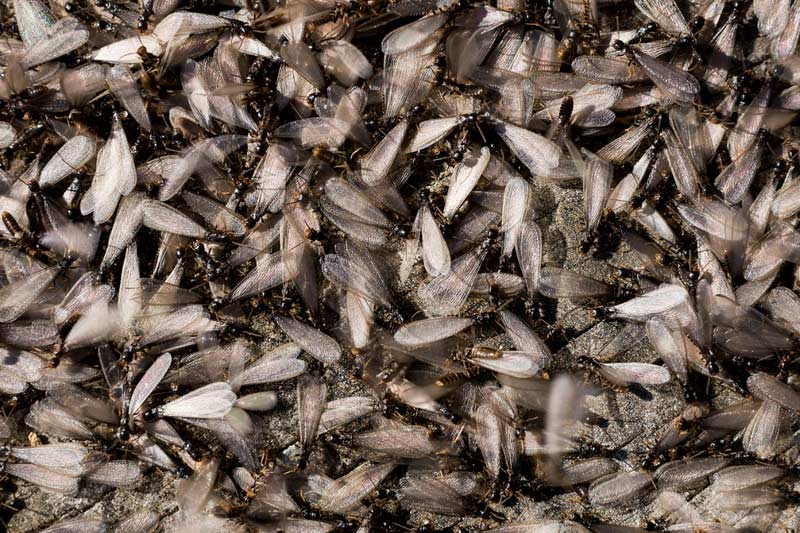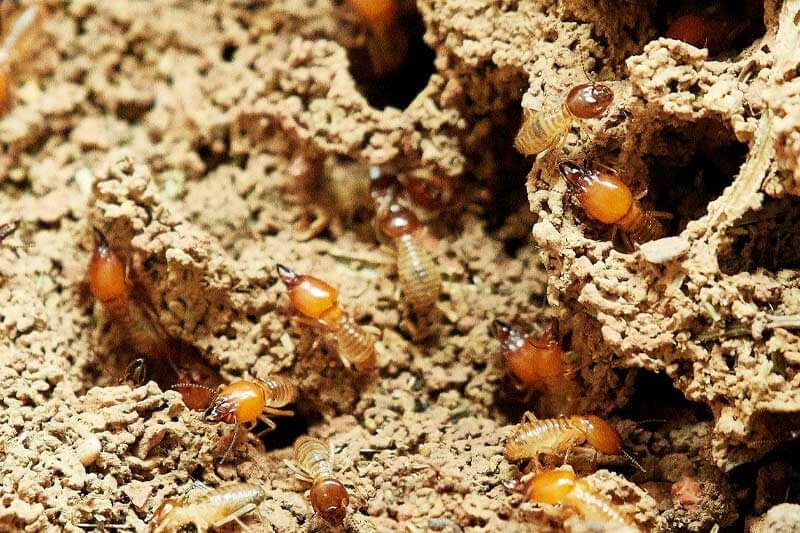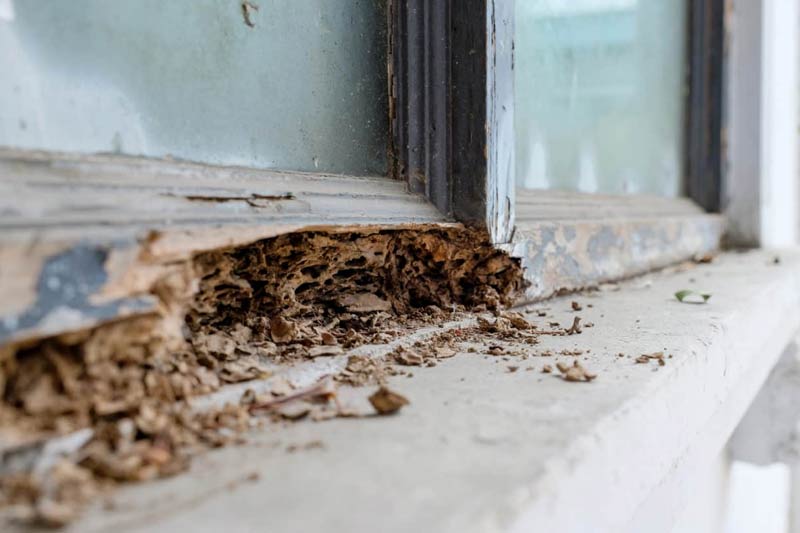Even it sounds like a scene from a horror or Sci-Fi movie it is not:) Termite swarms are a common and normal occurrence that contributes to the survival and dispersal of termites.
And yes, some termites such as Invasive Formosan termites, swarm at night, especially in their peak season late spring and summer. Drywood termites also like to swarm at night, while subterranean termites prefer the daylight, particularly after rainfall, like mushrooms:)
Winged termites swarm at night because they are particularly attracted to light sources, and they can often be found swarming around street lamps, windows, etc.
Termite swarmers are crucial for the survival and dispersal of termites. They are “special forces” of fertile termites called alates. The description of their “job” is to mate and establish new colonies, which will irritate us, people:)
When the time is right, the winged alates emerge from their shelter to find a mate. This flight is very brief because they lose their wings very fast and they must return to the ground.
Every flight when a new colony is conceived is considered successful. The new pair will be the king and queen of their own new colony.
In most cases, swarming can indicate that the mature colony is already active on your property or in your home, so investigate.

When do termites prefer to swarm?
In the table below you can find the termite’s favorite period to swarm:
| Type of termite | Period of the day | Time of the year |
|---|---|---|
| Western Subterranean termite | Day | Autumn, winter, early spring |
| Arid-land subterranean termite | Day | Spring and fall |
| Desert subterranean termite | Night | July to September |
| Formosan termite | Night | Late spring and summer |
| Desert Drywood termites | Night | June to September |
| Pacific Dampwood termites | At dusk | August to October |
How long do termites swarm?
A termite swarm can seem to come out of the blue, and the peak of activity usually lasts about 30 to 40 minutes. Alates that are lucky enough to mate and create a new colony will head underground, while most will die from dehydration.
During the swarming process, the termites will shed their wings, and you will see only the remnants around window frames, porches, and your yard.
Does swarming termites mean infestation
It’s not a good sign. Just because you see a swarm of termites, doesn’t mean they originated from your property and you have an infestation, but you need to be careful they are not on the hunt for a new home… yours!
How long does the swarming season last?
This depends on the termite species and the climate in a particular geographic area.
For example, if you live in Southern California your equation should be when don’t termites swarm since their swarming season in CA last from late winter to early winter:)
Neglect the season, termite swarm means a termite colony, and potential for damage is really close, so react!

Use THIS shortcut
- Step 1 – Scroll to the top of the page
- Step 2 – Answer the questions about your pest job
- Step 3 – Within seconds you will be matched with the top pest control professionals
- Step 4 – Compare quotes and choose the best pro for your job.

How to get rid of termite swarmers?
The aftermath of a termite swarm includes shed wings and dead termites. If a termite swarm manages to get into your house you will have to clean leftovers because termites can’t get outside and into the soil before they die.
How do swarmers penetrate my home?
Cracks around the doors and windows, cracks in a concrete foundation, damaged drywall, or trim work can be a shortcut for the swarmers. Of course, fixing these gaps is possible but once the swarmers invade your home you will have to get rid of them as soon as possible.

How to protect your property from swarms and infestations?
Note the location of all the swarmers and piles of dropped wings around your property. Indoor infestations and activity originating from foundations, walls, porches, and outbuildings require attention from a licensed pest management professional. When outdoor swarmers are present it doesn’t necessarily indicate that your house is infested too, but inspection is recommended just in case.
Additionally, protect your property by caulking cracks in your foundation and sealing vents with mesh screens. Another helpful strategy is controlling moisture problems and keeping your property free from landscape debris.











